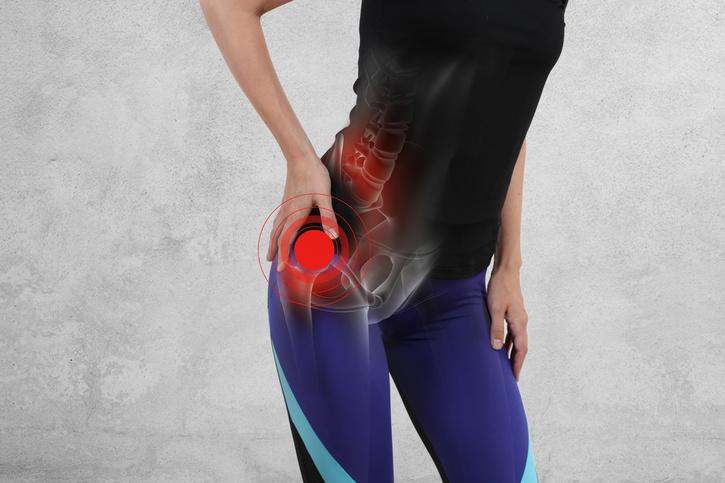From indiatimes.com
Hip arthritis occurs when cartilage in the hip joint wears down or is damaged, causing the joint bone surfaces to grind together and become rough. This causes pain and stiffness, making the movement of the leg difficult.
There are various types of hip arthritis, but all involve a loss of cartilage in the hip joint, which eventually leads to bone rubbing on bone and joint destruction.
Contributing factors of hip arthritis
 Hip Osteoarthritis | Stock
Hip Osteoarthritis | Stock
The most common type of arthritis affecting the hip is osteoarthritis, simple wear and tear on the joint over time, and it is most common in people over 60. The risk of developing hip arthritis rises with family history and age. Overweight patients and those who have had hip joint trauma may experience increased cartilage wear.
The joints that become affected, how badly they are affected, and when they become affected vary from person to person, depending on other factors unique to each individual, such as:
- Hip anatomic structure (a person's natural bone strength/ angles)
- Weight
- Level of activity
Unfortunately, once arthritis advances, it is extremely hard to control. These processes result in cartilage loss in the hip joint, resulting in bone-on-bone rubbing in the hip. The degree of pain and disability experienced by people with arthritis, on the other hand, varies greatly.
 Hip Osteoarthritis | Stock image
Hip Osteoarthritis | Stock image
Symptoms of hip osteoarthritis
- Aching groin, outer thigh, and/or buttock pain
- Joint stiffness
- limited range of motion (for example, difficulty putting on shoes and socks)
Walking and other motions that stress the diseased hip cartilage usually increase pain symptoms and reduce a person's ability to be active levels in people with hip osteoarthritis. Simultaneously, inactivity - not moving the body much - can weaken the hip joint muscles, making daily activities even more difficult.
Surgical treatment
Hip arthritis can be managed in various ways, depending on the severity of arthritis, the patient's age, anatomy, and underlying condition. Hip arthritis surgery options range from operations that preserve the hip joint to those that completely rebuild it, with treatment options including nonsurgical, surgical, or a combination of the two. If non-operative treatments have failed to alleviate a person's condition, surgery may be the best option for treating hip arthritis.
Joint replacement surgery, either total or partial
 Hip Osteoarthritis | Istock image
Hip Osteoarthritis | Istock image
Total hip replacement, also known as total hip arthroplasty, is the removal of the damaged parts of the hip joint and socket and replacement with artificial implants made of metal, ceramic, or very hard plastic. This artificial joint (prosthesis) aids in the reduction of pain and improvement of function. This surgery may be an option if hip pain interferes with daily activities and nonsurgical treatments haven't helped or are no longer effective.
Partial hip replacement, also known as hemiarthroplasty, involves replacing only one side of the hip joint, the femoral head, rather than both sides, as in total hip replacement. This procedure is mostly performed on elderly patients for hip fractures Hip resurfacing: was developed as an alternative to total hip replacement (which may be appropriate for some patients), the arthritic cartilage and acetabulum (socket) are replaced while the person's natural femoral head is preserved. Because of higher failures of some designs usage of hip resurfacing is now drastically declined.
Recovery
• Physical Therapy: Daily activity and exercise can help you regain joint and muscle function. A physical therapist can advise you on strengthening and mobility exercises and teach you how to use a walking aid such as a walker, cane, or crutches. You'll gradually increase the weight you put on your leg as therapy progresses until you can walk without assistance.
• Home rehabilitation: Before you leave the hospital, you and your caregivers will provide instructions on how to care for your new hip. To ensure a smooth transition, follow practices like getting help from a friend or relative to prepare some meals ahead of time, placing daily items at waist level to avoid bending down or reaching up, etc.
About the author: Dr. Narayan Hulse is the Director - Department of Orthopaedics, Bone and Joint Surgery, Fortis Hospital, Bannerghatta Road, Bengaluru. All views/opinions expressed in the article are of the author.
No comments:
Post a Comment